Blog 03/2024
When I began working for the city of Clearwater, one of my first projects was to restore an old wildlife mural that had be beaten down by the elements. Its colors were faded, surface dirty, but the artist’s work still teemed with details. Each time you laid eyes on it meant finding an animal or flower not seen at first glance. Something worth preserving as a part of the park’s history.
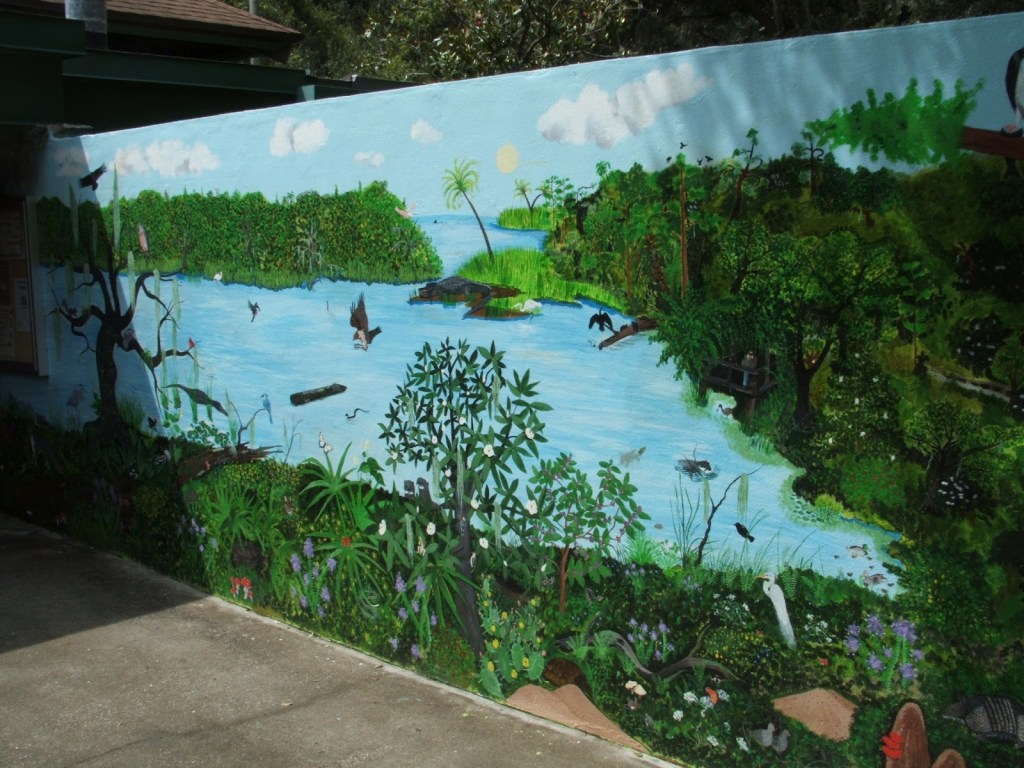
Mural Restoration
As an artist, I took on the task of revamping the wall. I researched the materials I’d need, while bring a few I had on hand already. Using the right sealant was the biggest parts, as we wanted this mural to last some time. I found a polyurethane varnish that could be used for the purpose I had in mind. Muralists typically use these products once everything has been completed on the painting side of things.
My first step was cleaning the surface by gently washing and scrubbing away dirt and debris with a soft sponge and soap and water. Rain runoff, stains, and insect cocoons all came down without too much fuss. This took about 2 days if I remember correctly. Some stains were there to stay and had to be touched up.
I tackled the sky first, reinvigorating it with new, brighter blue, and added fresh white to its tarnished clouds. I had to be careful mixing for the right shade of blue. I moved on to darkening and touching up the tree line and plants. Some color had been scuffed away over time. The water’s surface got a few new colors added to brighten it up and to help cover some staining I couldn’t clean off.


Several birds and animals got new colors added to fill in what had faded over the years. Some of their most prominent colors as recognizable birds weren’t nearly as visible before. Unfortunately, toward the bottom of the mural there were parts of the wall that had fallen away. There was also a side wall with a continuation of the mural that couldn’t be saved, as the walls surface and the paint was peeling off. Currently, the rest of the mural is underneath a patio roof. While it isn’t exposed to the sun’s UV damage, it still gets a little wet in rain, and the bugs still do their thing. I made no signature on this, as it was the work of another artist and I wanted to respect that. Her work speaks for itself, and it will live on as history here.
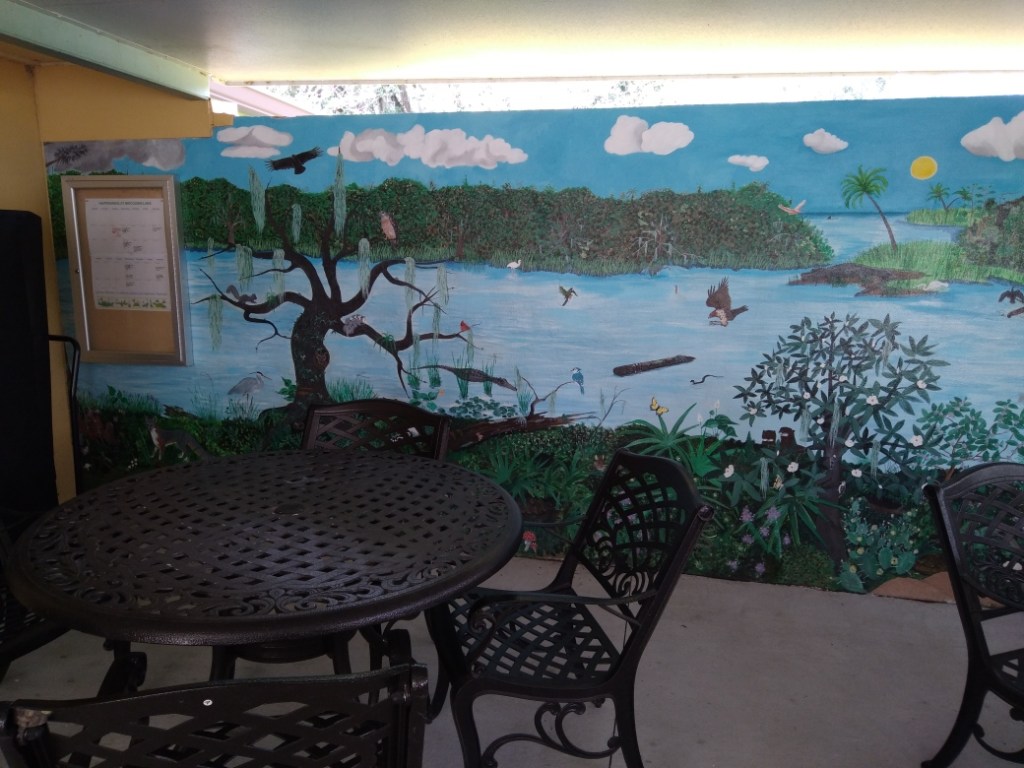


The sealant required 5-6 coats to provide its full protection for outdoor application. I want to say it took me about a week to apply all six coats. I believe it was somewhere between 2 to 3 weeks to complete this restoration back in July 2023.
My Mural PT 1
Not very long after, more around August of last year, I started planning my own contribution to the art in this park. Starting with a sketch, I visually planned out what I wanted for the wall. Once I was given approval, I started drawing out all the major features where they were intended to go. I realized I had more room (a bigger wall) than I thought, so I was able to add some elements not on the original drawing. The log with a hole was the biggest change, along with more trees in the background.

Using painters’ tape, I covered the sides of the wall, baseboards, and the frames over the animal enclosures to protect from any paint getting through. I printed off reference photos of the species for each area of the mural, and then I started laying down base coats for water and land on the right side of the wall.
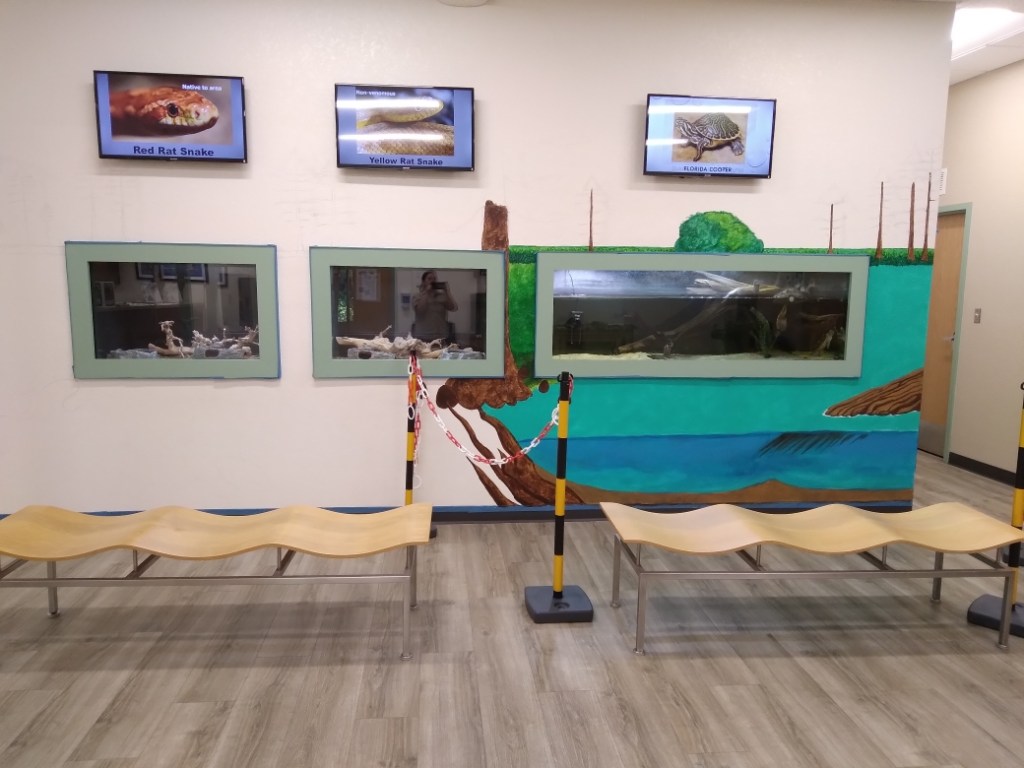

I had taken a look at a few wildlife murals and how they displayed water areas from both surface and underwater points of view. I wanted both visible in this mural. It may not be the best example of the idea, but I feel it worked for what I was trying to achieve. I’d definitely like to improve the way I can achieve this visually in future projects.
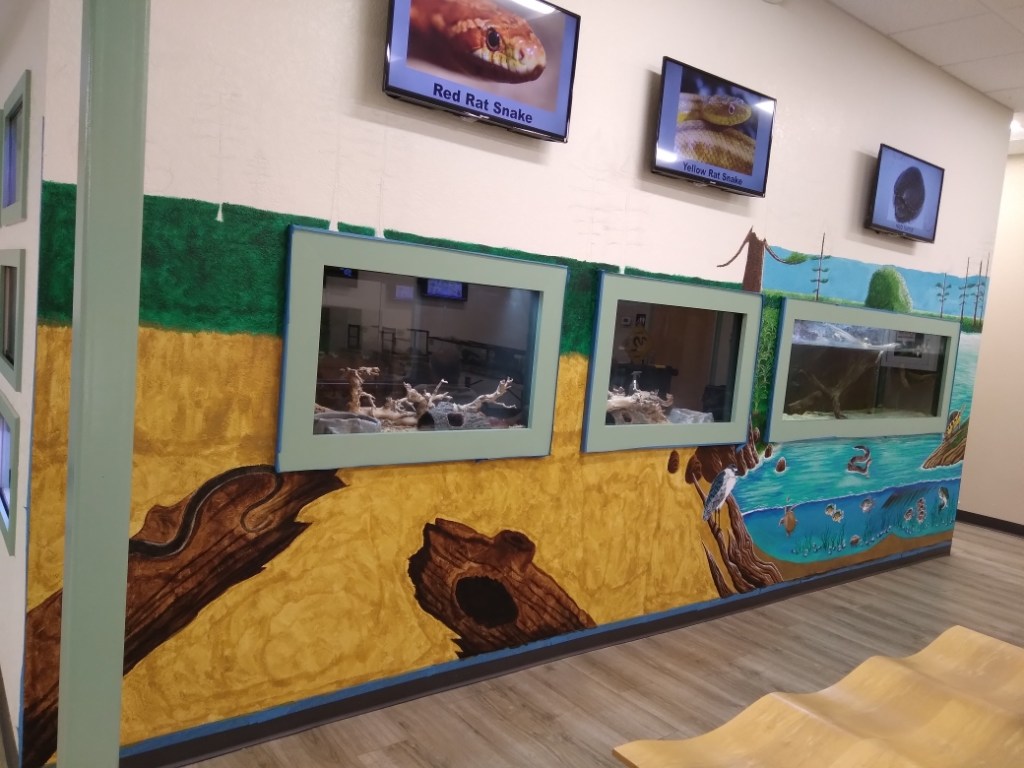
I’m particularly happy with how the Cottonmouth snake and Cooter turtle turned out. The Black-Crowned Night Heron isn’t too shabby either.




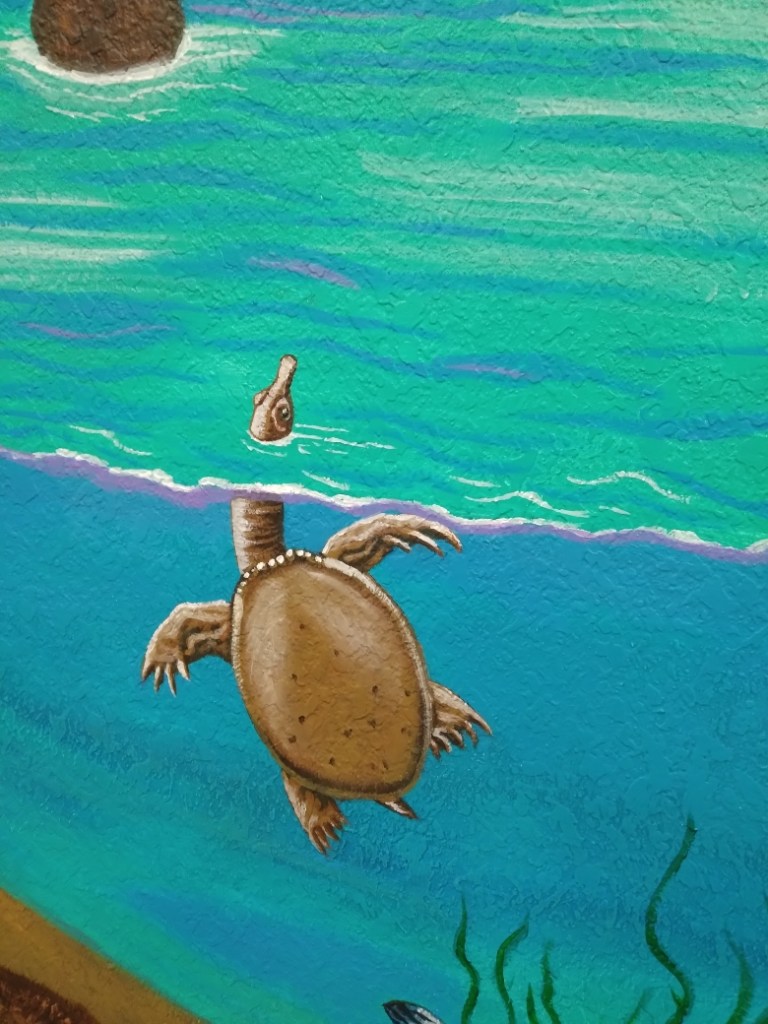
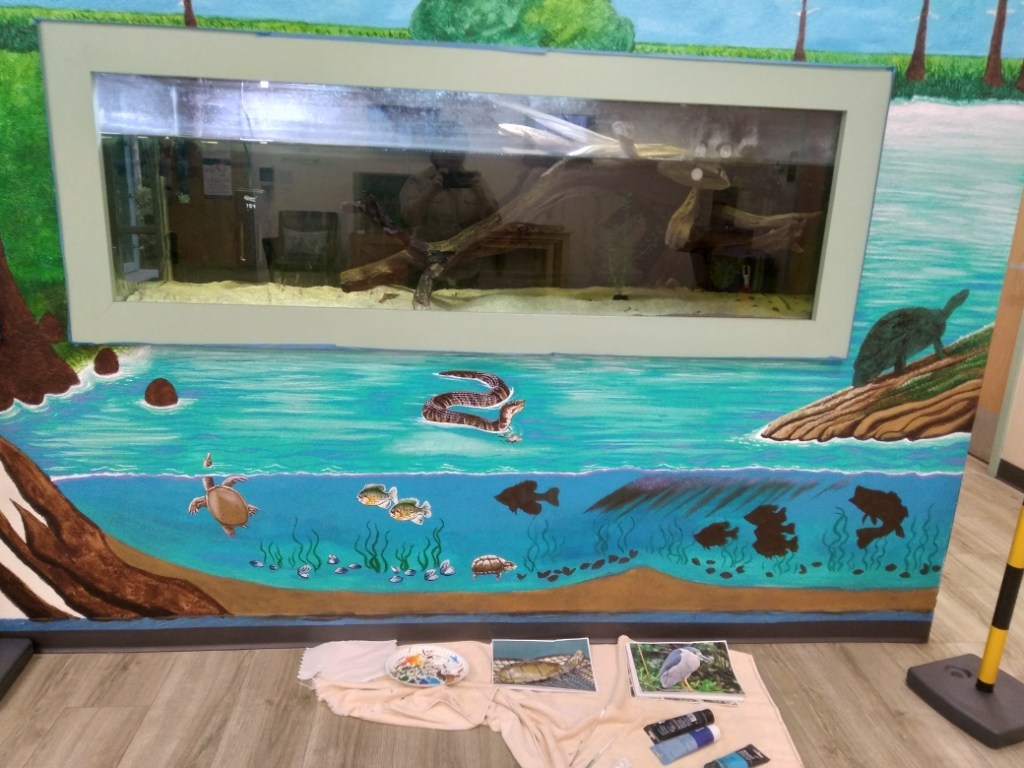


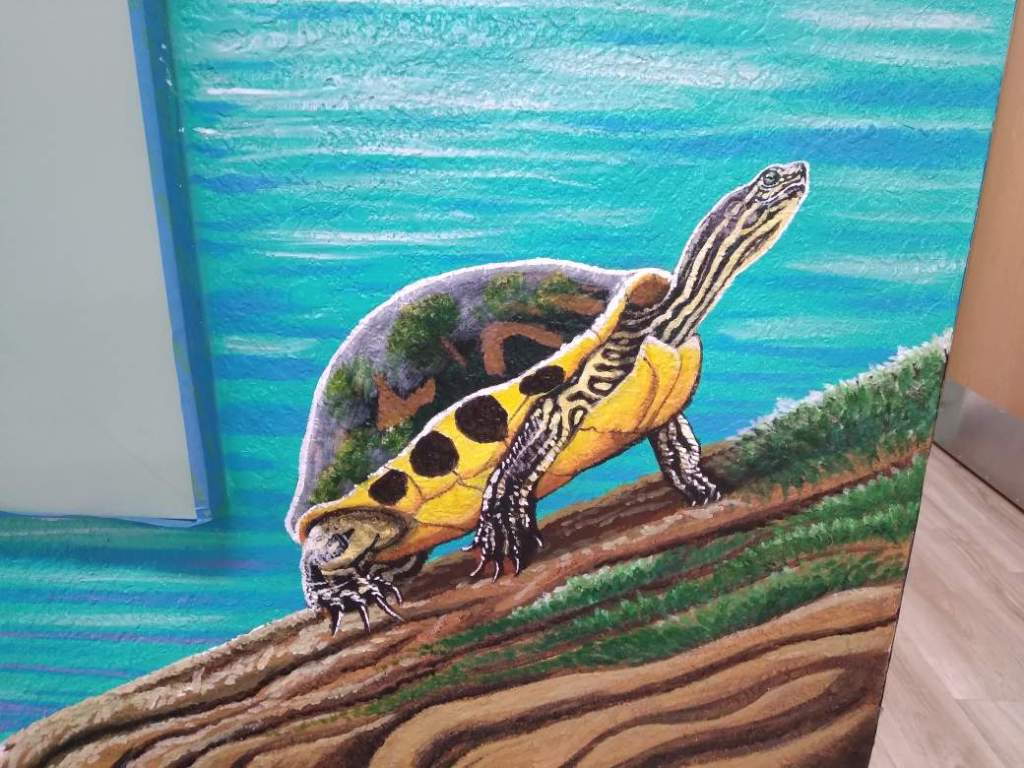
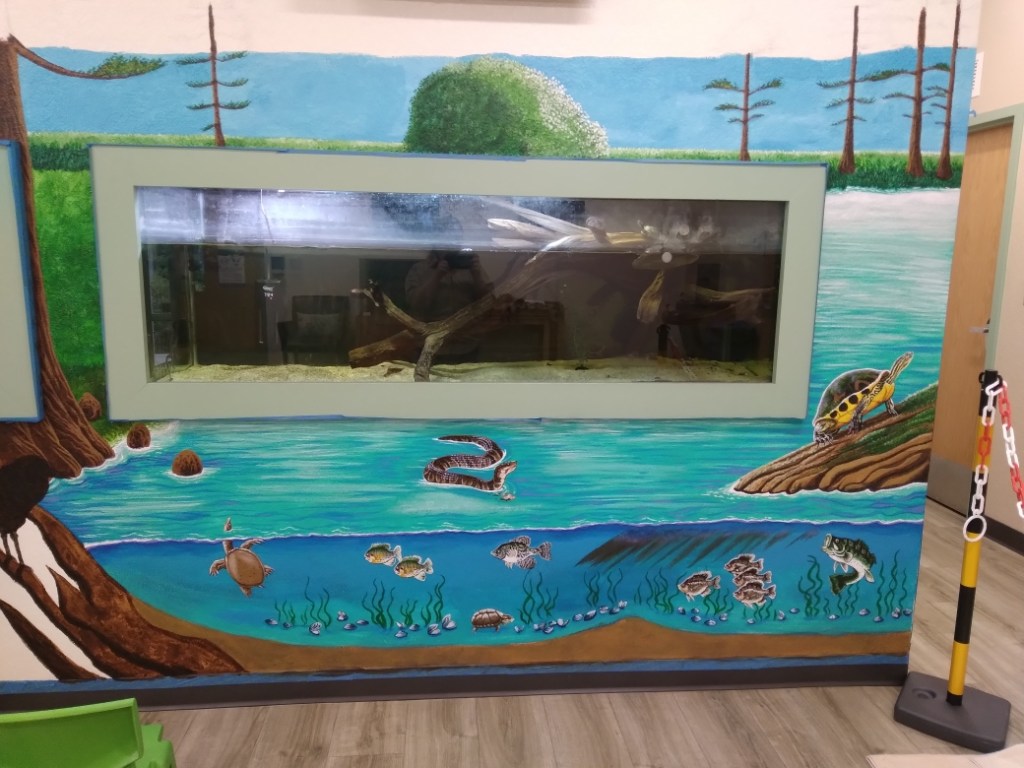

The land area at the bottom of the water consisted of a muddy color as I wanted that to reflect the riverbed/pond floor. Moving up, I had the green area with Bald Cypress trees on the other side of the shoreline. Close by, the “knees” of one Bald Cypress are painted coming out of the water’s surface. We have these trees locally, and they grow this way naturally close to the water’s edge. In swamps, they even grow directly in bodies of water.

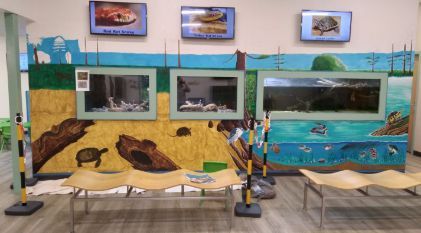

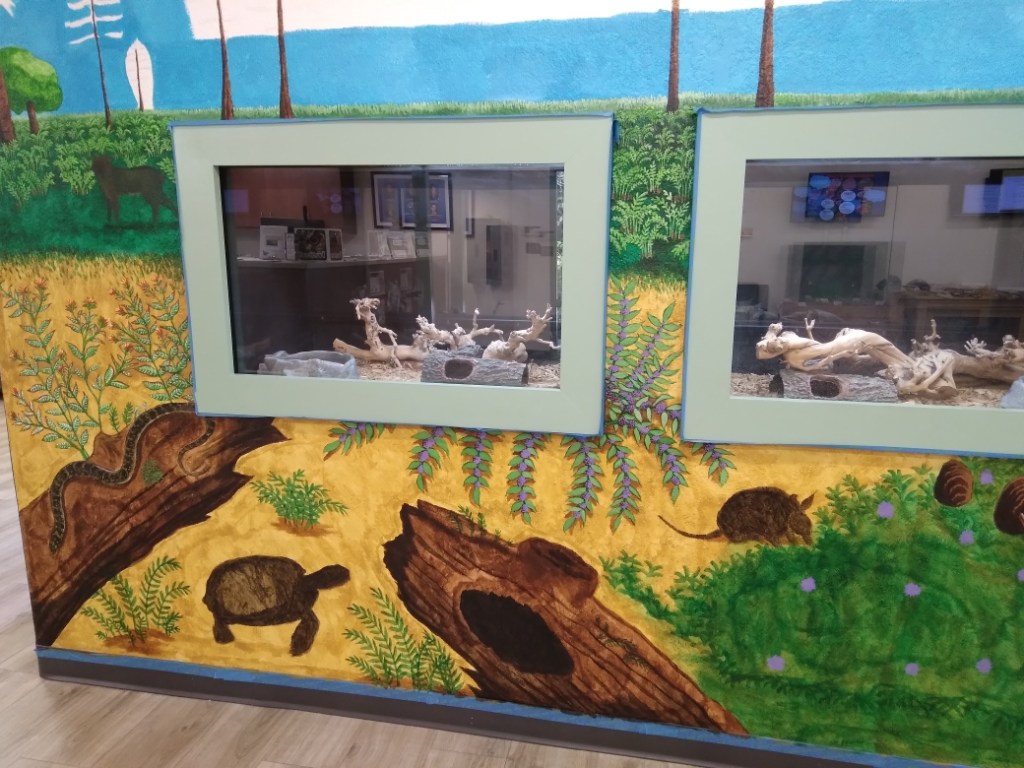
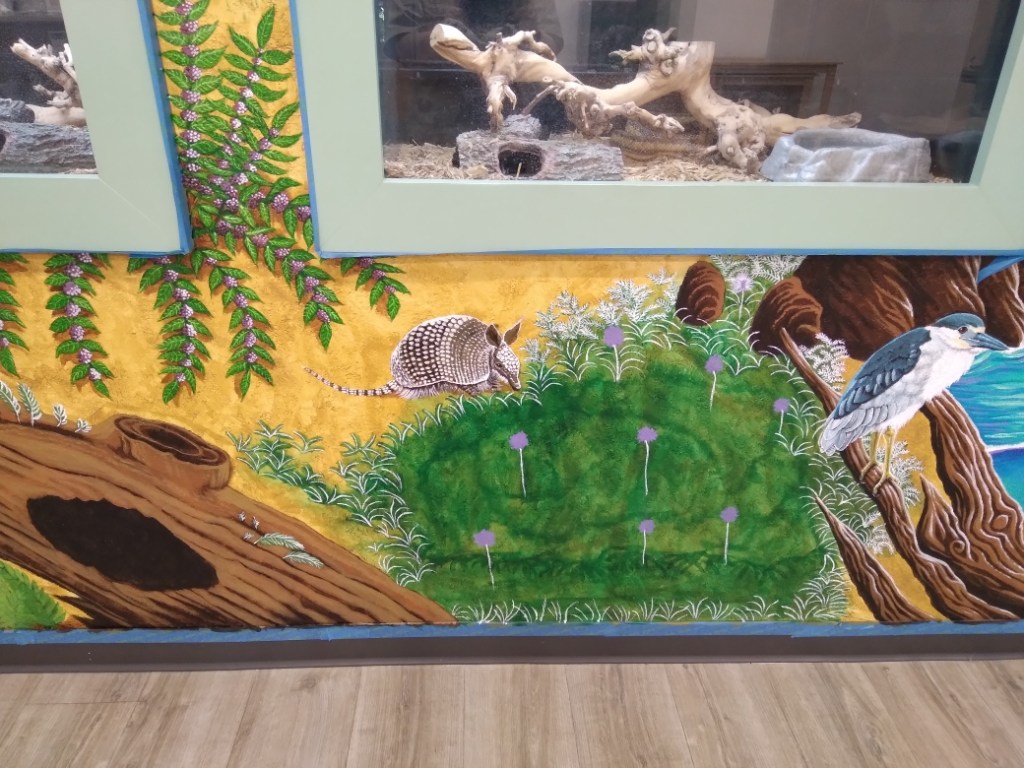


In much of the greener areas of the mural, I painted coontie palms en masse. It was very repetitive, but that is how they grow. They’re native cycads in Florida, and their seed pods are highly toxic if ingested. I also included the one butterfly that uses it as its host plant; the Atala.
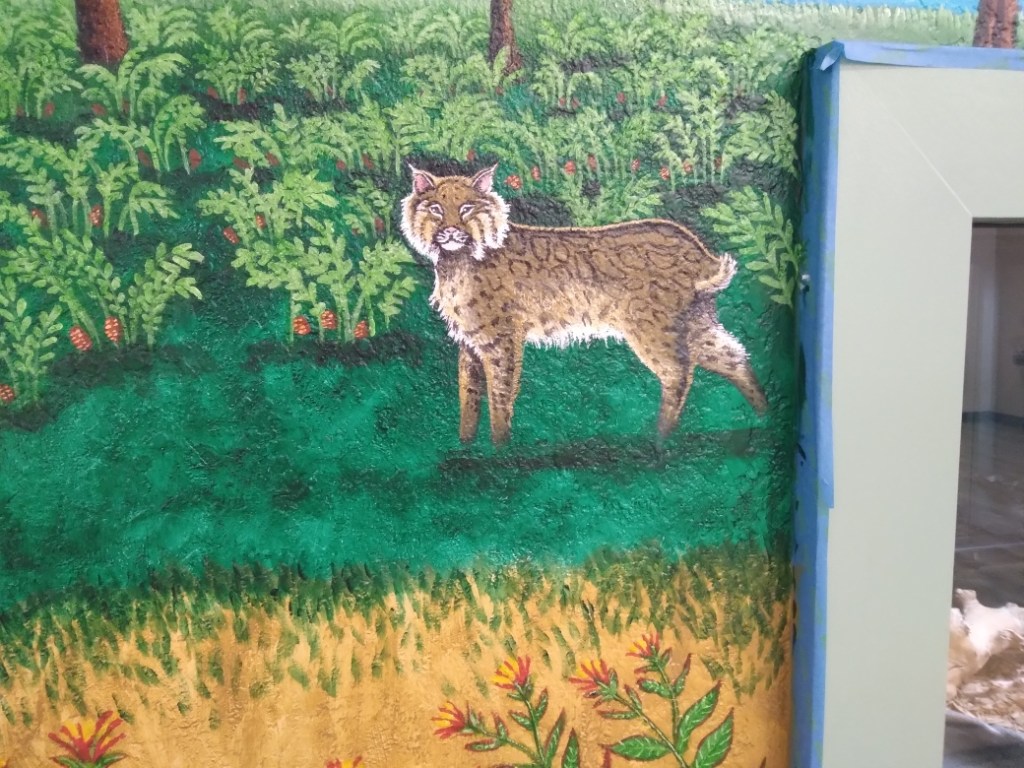

I will stop here, as the remaining parts of this mural are incredibly detail intensive and I will cover it in Part 2.
Let me know what you think. Have you or someone you know ever painted a mural?

